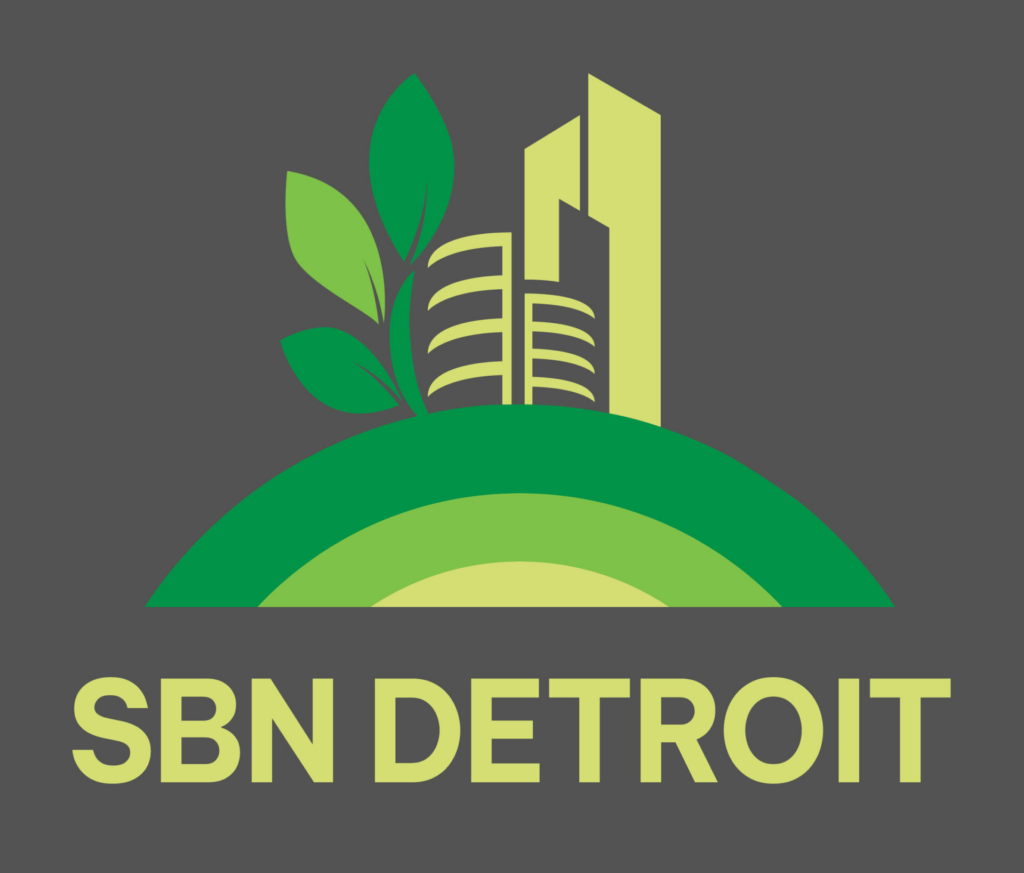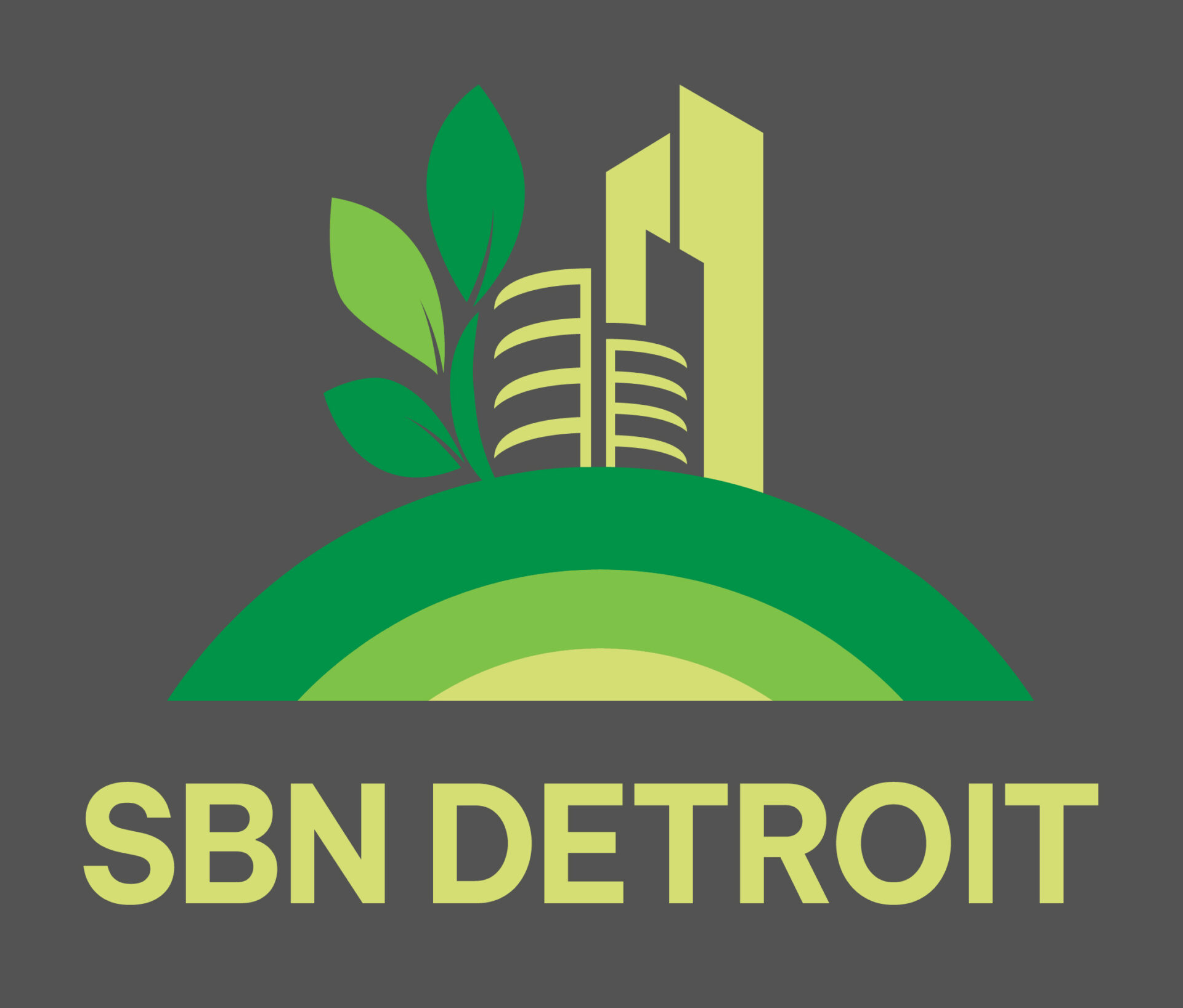Through Staffing, Cleaning, and Advocating for the Community, Business Owner is Working to Motivate Detroiters Toward Sustainable Growth
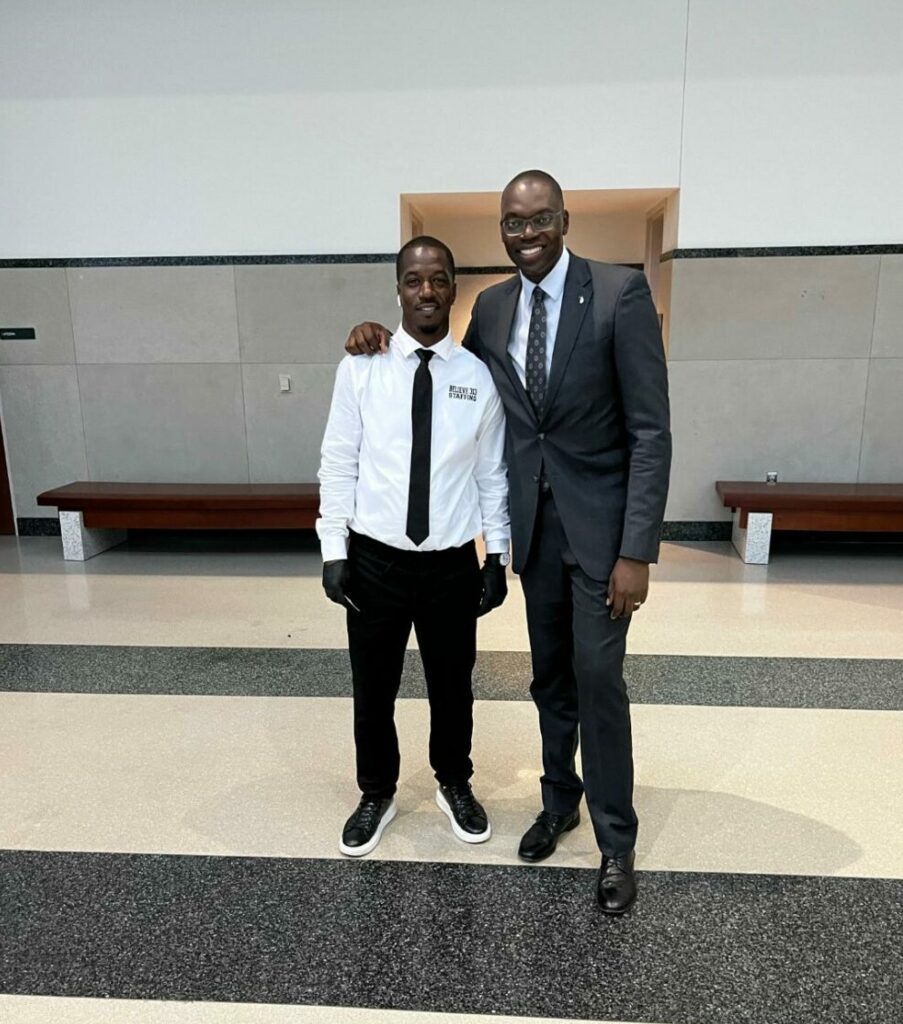
From social justice to getting Detroiters back to work, and even an emerging green dumpster business, Mario Kelly is following his passion for connecting those in the community to sustainable opportunities and inspiring others to follow their business dreams. To that end, Kelly started B3L1EV3 – a motivational-apparel company – several years ago to inspire Detroiters to go after what they believe in. Keeping that sentiment, he then launched Believe 313 Staffing, Believe 313 Cleaning, and soon-to-be Believe 313 Dumpsters. Born and raised in Detroit housing projects, he has been a community activist and liaison for years. Kelly started Believe 313 Staffing in 2017, following that with the launch of Believe 313 Cleaning in 2020, and now holds contracts to do post-event cleaning for Ford Field, Little Caesars Arena, Comerica Park, the Fox Theatre, and Pine Knob Music Theatre. His extended vision for Believe 313 Dumpsters is about diverting commercial and residential waste from landfills in the city of Detroit and beyond. Here he talks to SBND about his businesses, his inspiration, and his continued efforts across areas of sustainability in Detroit. Q: How did Believe 313 Staffing start? A: I grew up in a HUD neighborhood at I-75 and Canfield and nearby was the meat packing company Wolverine Packing. They had received a tax abatement from the city of Detroit to build a storage unit and a park in the neighborhood. Part of that tax abatement required them to hire 50 people from the surrounding area. Owners Jim and Jay Bonahoom came to the community to get insights on what people wanted and to start to talk about hiring. People in the neighborhood referred them to me because I was heavily involved in the community and knew a lot of people. They told me they need 50 people and I brought them 100 applicants. Jay and Jim then began urging me to start a staffing company to help connect people in the neighborhood to opportunities. I thought – what does a kid from the projects without a degree know about starting a business? But they kept advocating for me and supporting me, so I did it, and today it’s a seven-figure business. Q: You’ve been very involved in social justice and community. You started a program called Canfield 75, an effort that aimed to bridge the divide between housing projects in your community. You created a neighborhood Meet Up and Eat Up – a free summer lunch program for students – and you’ve coached and led youth groups in several capacities. Where does your passion come from? A: I’ve always felt that my purpose is helping people. And growing up where I did … you form strong bonds. We had to help each other in whatever we had going on. There is a real sense of community in underprivileged areas. I want to and can get people in the community to work. They are ready and willing to work, and I enjoy connecting people to local businesses and creating opportunities for people to get ahead. My purpose here is to help assist people on their journey to financial stability. It’s a win/win. Q: You grew your staffing company and added a cleaning company – Is that right? A: Yes. I had the concept and business cards – the start of the cleaning company. I was involved with the Detroit Youth Choir and they were invited to take a tour of Shinola that I attended. That was serendipitous because the individuals at Shinola happened to mention that they needed a new cleaning company. I wrote up a proposal and have been cleaning for them since. Eventually, I was referred to Comerica Park, and that opened the door to all of the arenas. I just held a two-day job fair to hire people to clean Ford Field on Thanksgiving. The pay is $22 per hour which is solid. I had 120 people come out for this opportunity. This helped folks earn money to buy Christmas gifts and fulfill other basic needs. Q: What sustainability practices do you follow regarding your work at the arenas? A: We use all eco-friendly cleaning products. All of the arenas have robust recycling practices, and we sort all plastics, cardboard, cans, and bottles for the arena’s recycling companies to then handle. I’m working to convert everything we do as a company to environmentally friendly – such as cleaning products – and a focus on waste diversion. That is the impetus behind the new dumpster company – Believe 313 Dumpsters. Q: Tell us about Believe 313 Dumpsters. A: Living and working in the city, and through the cleaning business, I’ve realized that between residents and businesses we have a lot of dumpster usage in the city. And most of the contents of those dumpsters is ending up in landfills. The goal behind Believe 313 Dumpsters is to recycle and divert as much of the contents of the dumpsters as possible. Q: What does the future look like for the Believe 313 companies? A: Motivating Detroiters in a way that moves people and the city forward in a sustainable way. Whether that’s from a financial and economic standpoint, a social justice standpoint, or an environmental standpoint, for me it’s about creating opportunities for people to thrive. Be sure to subscribe to our newsletter for regular updates on sustainable business practices in and around Detroit.
Rockford Construction – Focusing on the Full Life Cycle of Spaces
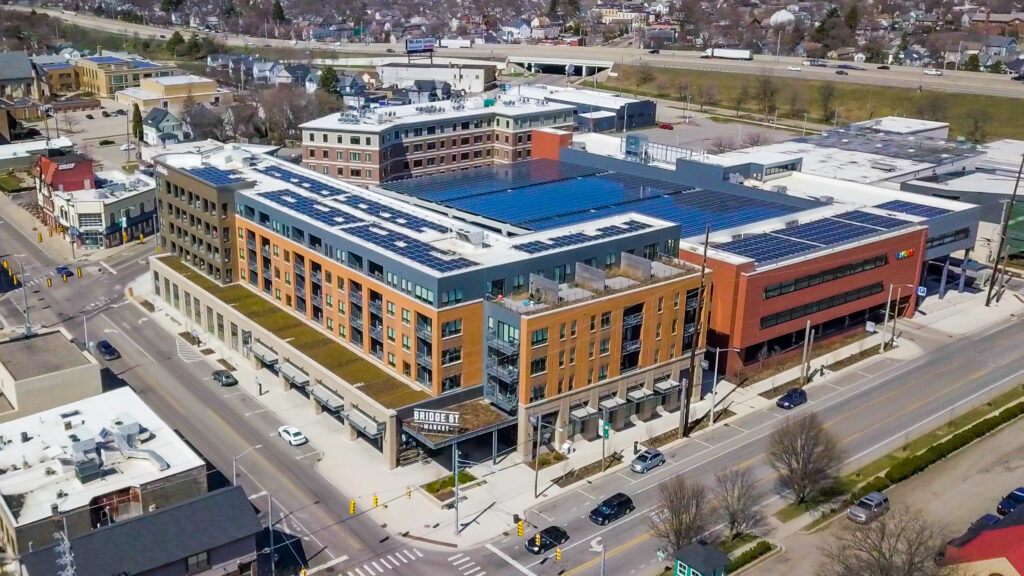
From real estate development to construction and property management, Rockford Construction has been serving the commercial, multiunit, educational, industrial, healthcare, and retail markets throughout the Midwest for more than 30 years. How do they approach sustainability? Mike VanGessel, founder and CEO of Rockford Construction, shares that and more with SBN Detroit. Q: Please tell us about the sustainability practice you have in place. A: Rockford’s current sustainability efforts reflect a “triple bottom line” that is focused on people, the planet, and profit. We consider ourselves to be good stewards of all three of these finite resources. This is certainly a broader view than many people take, but one that is important to our clients and our communities. And we’re not just a construction company. We also develop, own, and manage properties, so our focus extends across the full life cycle of space – not just the initial resources during construction, but the total cost of ownership and the impact our buildings make into the future. As a result, our efforts are quite broad. But each building type brings its own set of challenges and opportunities, allowing us to customize our approach and maximize value to our clients. Q: When did your focus on sustainability come about? A: Decades ago. Rockford was an early adopter of sustainable construction practices. We knew that buildings were a major driver of energy consumption at that time. As a company committed to delivering value to our clients, we recognized that achieving greater energy efficiency would also decrease long-term costs. As the sustainability movement evolved and our knowledge of healthy buildings has grown, our efforts have expanded to include things like water conservation, low VOC (volatile organic compounds)-emitting materials, locally sourced and rapidly renewable materials, and more. Our more-recent triple bottom line approach recognizes that “people” and “profit” are also finite resources, as we’ve seen in our current economy. The shortage of workers – not just in construction but in most industries – has driven a focus on a construction process and end-user facilities that are highly efficient, productive, and attractive to people. The reduction of waste in time and money allows those resources to be deployed elsewhere. Q: What are some examples? A: Over the years, Rockford has completed hundreds of projects that are LEED certified or designed to meet certification requirements. But our approach is applied to all our projects, exploring the building design, systems, and materials to determine the right solution based on client needs, first costs, and long-term operational expenses. The most successful projects result from early involvement and clear goal-setting. One of the best examples can be found in Circuit West, a cutting-edge energy district that encompasses a 13-block area in Grand Rapids. As Rockford was developing and constructing buildings in the area, we partnered with Consumers Energy in their effort to pilot next-generation energy technology. Together, we installed 1,800 solar panels and battery storage capable of producing 500 kilowatts every hour. Power lines were buried, and solar arrays were installed in conjunction with other construction work, greatly reducing installation costs. The result is more reliable, renewable energy for the neighborhood. While Circuit West was a large-scale effort, early involvement allows us to explore all possibilities, uncovering those that make the greatest impact on our clients’ triple bottom Line. Q: What are the drivers behind these practices? A: The driver of sustainability is simple. We are creating healthier, more energy-efficient, and cost-effective buildings for our clients and the people who will live, work, play, and heal inside of them. In the early days, sustainable design and materials were thought to drive additional costs to buildings, and owners had to be deeply committed. Today, a better understanding of good design, appropriate systems, and more readily available sustainable and renewable materials are all driving cost savings. Why a client chooses sustainable solutions – cost savings, environmental responsibility, or healthy spaces – isn’t important. What matters is that the result helps us conserve resources and positively impact our world. Q: Rockford services so many different industries and types of construction – how do your sustainability practices differ between projects? A: Each project is unique, and clients have different goals and expectations. That said, best practices can vary based on different project types. For example, some industrial buildings are high users of energy and, at times, water. Energy-efficient systems, water conservation, and grey water options can provide good solutions. In healthcare facilities, research shows that healing environments include natural light, views, good ventilation, low VOC products, and easily cleaned materials. By focusing on what makes each building unique, the low-hanging fruit of sustainability becomes clear. Often, the most sustainable building is the one that is renovated, either for its existing use or for a new one. This is particularly true in an urban setting, where many building exteriors were built to last for decades. By reusing the walls and structure, not only are tons of waste materials diverted from landfills, but owners can capture the value of materials already in place. Warehouses can be converted into apartment buildings, churches become office buildings and schools are reimagined into senior living. Over the years, Rockford has developed expertise in the adaptive reuse of space. Q: Do you have a team of people set up to implement your sustainability practices? A: In the past, the Rockford team included a director of sustainability. However, we wanted to turn what could be described as a “program” into a “practice.” Our construction team and our property and facility managers are all well-versed in sustainable practices. But we have a variety of team members, from accountants to graphic designers, who want to be a part of our company-wide efforts. That’s why we are launching a company-wide Sustainability Committee to continue to expand our impact both internally and externally. Q: Beyond vendors and material choices – what else do you look at? A: Locally sourced talent, vendors, and materials are part of a strategy that is appealing to our clients, who strive to support
College for Creative Studies Launches Graduate Program Toward Developing Leaders in Climate Action
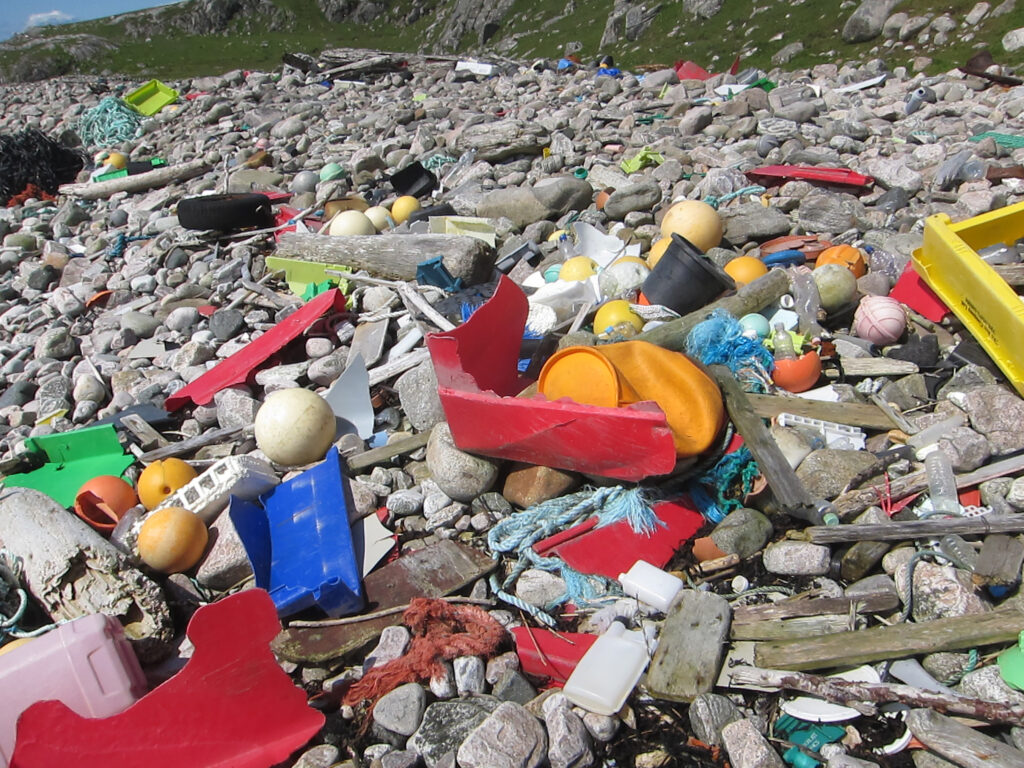
In the fall of 2023, the College for Creative Studies will launch Design for Climate Action – a new graduate program aimed at tackling the global climate action and change emergency from multiple angles. The program invites applications from designers and non-designers of all kinds, bringing together broad multidisciplinary mindsets for interdisciplinary collaboration. It will foster an understanding of zero-waste materials and processes, circular economies, civic infrastructures, and environmental stewardship. At its heart is the drive to bring about change in existing systems and transition to structures that reverse global heating and uphold climate justice and global equity. Leading the program is Dr. Ian Lambert, Dean of Graduate Studies & Research. Lambert is a designer and maker-researcher with extensive experience in academic leadership and curriculum development in higher education in the U.K., the U.S., and China. Lambert has taught sustainable design for more than 20 years and his work with ocean plastic in Scotland along with other waste streams is widely published. He has brought his work with ocean plastic to the Great Lakes and recently joined the Detroit River Coalition. For the last two years, he has been collaborating with the Charles H. Wright Museum of African American History on the d.Tree Studio – diverting dying trees from landfills to become narrative artifacts that elevate climate justice. He is a Fellow of the Royal Society of Arts, and a former advisor to the Creative Conscience Awards. SBN Detroit spoke to Lambert about the program. Q: What is the impetus behind the new Design for Climate Action Master’s Program? A: In addition to further embedding sustainability across the CCS curriculum, we are looking to highly specialize in addressing the climate crisis. This is about working toward and educating about systemic change. There are many perspectives required in tackling climate action, so the program is about foregrounding design thinking at the intersection of multiple disciplines. The program welcomes scientists, engineers, philosophers, and sociologists as well as designers and other creatives. It is the synergy formed by these different skill sets that can drive change in the climate crisis. It’s important to remember that while science presents the facts and explains what is happening, the climate crisis is a cultural crisis, a social crisis, an economic crisis, and a political crisis. It affects humankind in many different ways and it’s not just for scientists to solve. The program takes the position of stating climate problems calmly and rationally. We need to use intelligent and persuasive narratives to bring others, including business leaders and politicians, with us. The debate is often highly polarized, which is dangerous. So, it is important to temper our outrage and avoid alienating those across the divide. Q: What does it mean for CCS to offer this program? Is this kind of curriculum unique to design school offerings? A: The program is focused on action in the climate crisis and systemic change. I don’t know of any other program that takes such a multidisciplinary approach with design at its hub. Also, our grad program is growing, and part of our strategy is to consider where the needs are and identify opportunities for aligning with the activity that’s happening in Detroit. Essentially the program has three pillars that overlap and blend: The circular economy and closed-loop manufacturing and material cycles. Systems and infrastructures – How we can redesign these or make interventions and design out waste? Environmental stewardship and understanding the lasting effects of human production on our environment Q: What implications might this have for the Detroit businesses – graduates with this skill set and education coming into the workforce? A: A recent report in the Atlantic stated that the government will be spending $374 billion on fighting climate change, and some are estimating it will reach $800 billion. This will require experts of all kinds to implement and lead change within businesses, corporations, and public organizations. Experts who can galvanize collaboration and take action in multiple ways. The demand for climate design experts is only going to grow, and our graduates will go into the world with not only the expertise but the passion and capability to apply a persuasive narrative to bring about these changes. Q: Can you tell us more about bringing together broad multidisciplinary mindsets for interdisciplinary collaboration? A: At the graduate level all design programs operate at disciplinary intersections. The climate change crisis is omnipotent, and the key to this (working to solve it) is being capable of working with other areas of expertise. This is not a crisis to be dealt with by lone crusaders. It truly requires collaboration that is deep and expansive. So it’s really important to develop students into leaders who can advance this approach. When it comes to leadership, there is this concept of the T-shaped individual, where the vertical bar on the letter T represents the depth of related skills and expertise in a single field, and the horizontal bar is the ability to collaborate across disciplines with experts in other areas and to apply knowledge in areas of expertise other than one’s own. And then there are X-shaped individuals, with “executive” skills and deep expertise in a core knowledge area as well as strong leadership skills and credibility. We need both T-shaped and X-shaped skill sets to approach and address the climate crisis, and our program will work toward building these. Q: Will the students be involved in sustainability programs and projects in Detroit? A: CCS has an extensive and well-established set of partnerships and connections with industry and our students work on many sponsored and live projects. Currently, students are working with Consumers Energy to help implement EV charging services from a user experience perspective. Last year, our students worked with the Charles H. Wright Museum of African American History on redirecting dying trees from landfill to narrative objects. Our students have worked on clean air projects, food waste diversion, water security, sustainable tourism, and green mobility systems, to name a few. I’m also very proud of the CCS Color and Materials Design Students who
A Focus on Decreasing Food Waste in Detroit
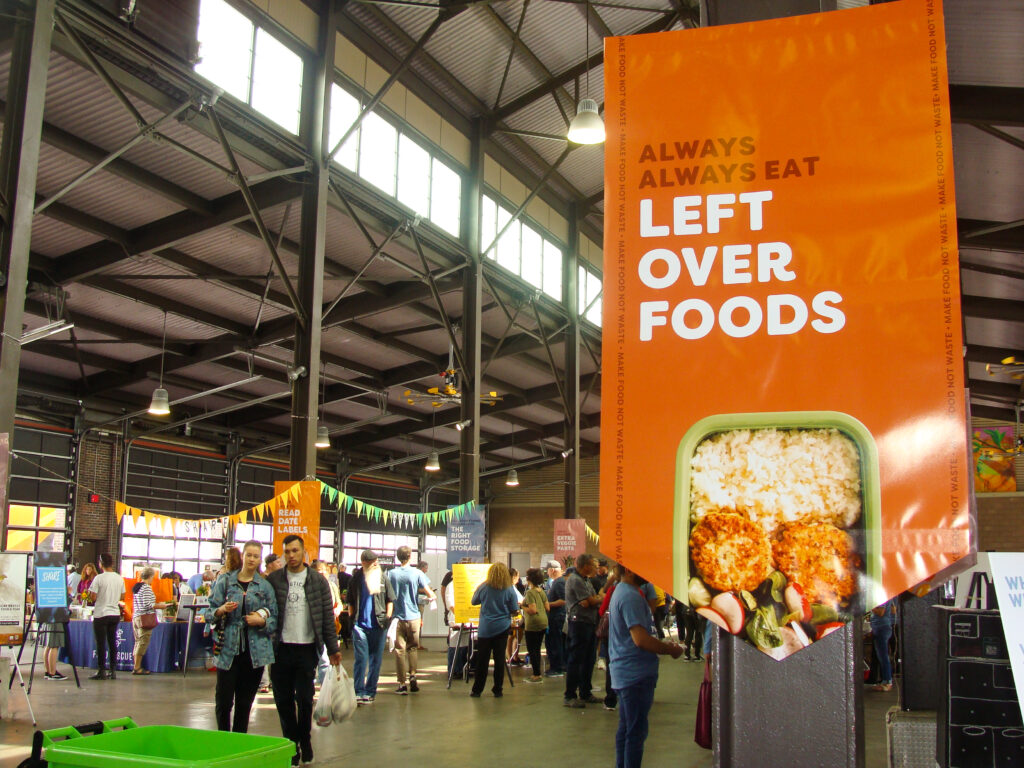
Motown Museum Chairwoman and CEO Robin Terry Speaks on the Design, Vision, and programming and how it will impact the city of Detroit.
How Does Consumers Energy Activate Around People, the Planet, and Prosperity?
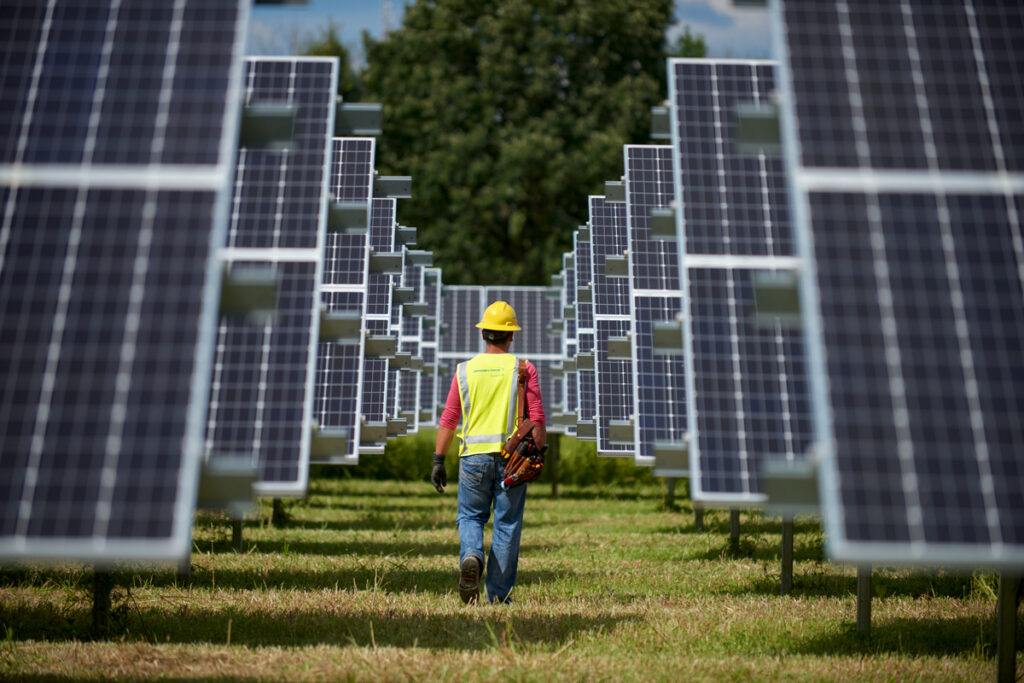
How does Consumers Energy, which provides natural gas and electricity to 6.7 million of Michigan’s 10 million residents, with 8,000+ staff members, approach sustainability? SBN Detroit spoke to Brandon Hofmeister, Senior Vice President of Governmental, Regulatory and Public Affairs for CMS Energy and Consumers Energy, about how the company executes its sustainability goals and about some of its current projects. Q: When did you begin sustainability efforts at Consumers Energy? A: From a very broad sense, the company has been focused on sustainability since it was founded. Our current intentional focus to prioritize sustainability specifically within our corporate strategy has been around for about a decade. Q: What is the organizational structure around executing your sustainability goals? A: Our corporate strategy is centered around a triple bottom line of people, planet, and prosperity with measurable goals that cascade down throughout the whole business and that are embedded in everything we do. We don’t necessarily source it to one department or team. We do have an Environment and Sustainability Council that includes top leaders and executives and officers who meet regularly to monitor progress toward key sustainability goals. We also have a Chief Diversity Officer and a focus on diversity, equity, and inclusion, and this overlaps and encompasses our sustainability objectives. It’s very cross-functional – everyone owns it and it’s embedded within all roles and levels of the company. Q; Please give some examples of initiatives and priorities in place around people, planet and prosperity. A: Regarding the planet, I would say our biggest initiative is transforming our electricity generation mix. We will retire our remaining coal plants in 2025 and move completely to clean energy, reducing carbon emissions by 60% from 2005 levels. This is a very aggressive goal but as a company, we are excited about it. From a people perspective, we are focused on dramatically improving electric reliability by hardening systems to stand up to more intense storm activity and leveraging best practices in technology and management to reduce outages. We are also deeply focused on the affordability of our services. We’re doing a lot of work to create payment and assistance and energy efficiency programs. We are also dedicated to finding ways to take cost out of our processes and the cost we pass on to our customers, so they get the best value for the services provided. This is equally important for our business customers. We must make sure electricity is cost-effective so businesses can continue to thrive and create jobs here in Michigan. Regarding prosperity, part of the triple bottom line is keeping our own business healthy and profitable for our staff and also our investors. We are expected to deliver consistent and low-risk financial results and that affects our community and the economy overall. Q: Consumers Energy employs more than 8,000 people. How do you share the vision and facilitate action? A: How we approach the goals in itself is important and I think has been impactful. We set breakthrough goals and unleash the team to find new and innovative solutions. It is challenging to set goals that we don’t yet know how to achieve, but this can also be very inspiring, as long as you give the “why” behind the goal. Our team inherently works for our friends and neighbors, and we want to deliver for them. So, whether it’s decreasing carbon emissions or increasing electric reliability, we set goals, give the why, and then let the power of the people take it forward. The outcomes are often quite remarkable and solutions we never thought possible are unveiled. Q: What do you think is one of the most impactful sustainability practices you’ve put into place to date? A: Our clean energy program is a good example. We set an ambitious goal to get to net zero carbon emissions by 2040. Within the framework of conventional wisdom, this originally appeared to be impossible. But the goal has opened up new ways of thinking. Retiring the coal plants was originally slated for 2040, but that’s been moved up to 2025 as I mentioned. We have a north star to reach and are working on this carbon goal every day. Q: What do you point to as an impactful project you are putting into place in the next three to five years? A: Electrification of vehicles is a big game changer for our industry. The company has a breakthrough goal to have a million EVs in service by 2030. This is great for the planet and great for our customers’ pocketbooks. The more electricity we all use, the more electric bills decrease. There are set costs for infrastructure, and if more people are using that infrastructure the cost per unit of electricity goes down. So, it’s a win-win. Q: How do you integrate the community and keep them informed? A: This is a huge part of our work. We spend a lot of time communicating what we are working on and why, but it’s a two-way street. We also want to understand the people and community we serve, so we conduct formal and informal stakeholder outreach. We do materiality assessments internally and externally. We engage customers and educate them on how they can save energy by considering an electric vehicle or participating in renewable energy programs. Most people don’t think about their utility service unless the power out goes out, but it’s important to continually communicate our broader mission. We spend time engaging in a variety of channels with customers to have two-way communication. Q: What advice would you give to SE Michigan businesses when it comes to laying out sustainability goals and achieving them? A: Start with what’s important to the business. Understand the impact the business is having and focus on a goal. Also engage stakeholders. Set ambitious goals and always communicate the why. It’s easier to bring people in when they are engaged versus being told. And finally, don’t have too many goals. Prioritize, set a few very ambitious and solid goals,
2030 Districts Network International Summit Held in Detroit
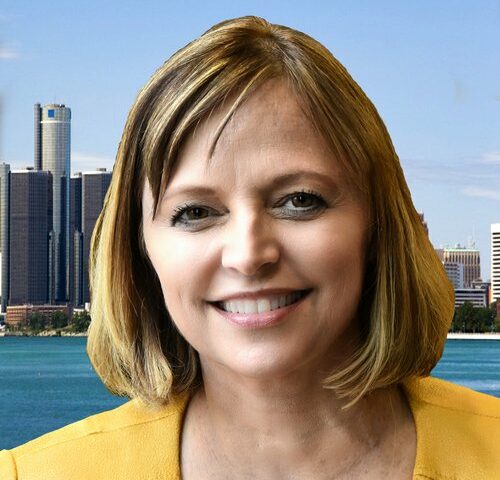
During Oct. 4-6, 2030 District directors and building owners, and members will convene for the 2030 Districts Network International Summit, which is being held for the first time in Detroit. The event focuses on sharing best practices in sustainability and the greening of buildings across the country and will also shine a bright spotlight on Detroit buildings and the many efforts in place to enhance sustainability in the city. “I’m really excited not only to meet with other District directors in person and get fresh perspectives and ideas but also to show off and share the work we’ve been doing to the world,” says Connie Lilley, director of the Detroit 2030 District. “I think there will be a level of pleasant surprise among our cohorts from around the country.” In addition to roundtables, presentations, and meetings to be held at Huntington Place, the largest LEED-certified venue in Michigan. The group will attend events and tours encompassing several key buildings, including the Renaissance Center, which is heavily involved in reducing carbon emissions; the Guardian Building, which is taking steps to reduce energy; the Central Mobility District and more. A welcome reception – which is open to the public – is being held at the Zero Net Energy Center to kick off the summit. The reception is expected to draw up to 250 people. The reception’s keynote speaker is Liesl Eichler Clark, director of the Michigan Department of Environment, Great Lakes and Energy (EGLE). We spoke to Liesl to get her insights on the summit, the 2030 Districts, and the work that’s being done in Detroit. Q: From your perspective, what is the importance of the 2030 Districts Network International Summit and the impact on the city of Detroit? A: The 2030 Districts network is a powerful catalyst across the globe in bringing local community and business leaders together to achieve ambitious climate and sustainability goals. Michigan is lucky to have three 2030 Districts in our state—Ann Arbor, Grand Rapids, and, of course, Detroit. Hosting the 2030 Districts Network International Summit in our state’s biggest city will increase awareness of the network and engage more Michiganders in this vital movement. It is also an opportunity to showcase the leadership and creative problem solving that has blossomed in Detroit and other Michigan cities and learn from peers from across the country and the world so we can put best practices into action here. The solutions being pioneered in Detroit and in other 2030 Districts, can serve as roadmaps for other communities to reduce their carbon pollution while providing good jobs and more vibrant, resilient neighborhoods. Q: What is the relevance of having it held in Detroit for the first time? A: Detroit has a proud and unique history. As home to the global auto industry, it boasts a strong manufacturing heritage. It is located in the heart of both the industrial Midwest and the Great Lakes Basin, which is home to roughly 20% of the Earth’s fresh surface water. Among U.S. cities with populations over 100,000, Detroit has one of the highest percentages of Black residents. It also has a large geographic footprint relative to its total population. For all these reasons, Detroit’s success as 2030 District can provide a powerful demonstration and proving ground for transitioning to carbon-free economy in a way that creates good jobs, advances justice and equity, improve air quality and public health, protects our water and other environmental assets, and builds vibrant places to live. Q: What are you looking forward getting out of the conference? A: I am looking forward to connecting with businesses and community leaders who are ready to double down on helping Michigan reach ambitious climate goals, namely, to reach carbon neutrality by 2050. In addition, we are always looking to beg, borrow, and steal good ideas from other states and places—particularly innovative solutions that others have already tested, refined, and perfected. So, in my networking at the summit, I will look for new partners and fresh approaches to our climate and sustainability work. Q: Overall how does the work of the 2030 Districts tie into your work? A: The work of 2030 Districts intersects with EGLE’s mission to protect Michigan’s environment and public health in too many ways to mention here. The most direct and obvious connection point is our climate and energy work. Shortly after taking office in 2019, Gov. Gretchen Whitmer created the State of Michigan’s first Office of Climate and Energy. The following fall she directed our department to develop the MI Healthy Climate Plan—our state’s plan to fulfill her commitment to transition the entire Michigan economy to carbon neutrality by 2050. As with 2030 Districts, the MI Healthy Climate Plan shines a spotlight on the ambitious interim targets we must hit this decade to reach our mid-century goals. And it, too, focuses on our built environment with “Repair and Decarbonize Homes and Businesses” serving as one of its six core pillars. More specifically, it calls for a 17% reduction in greenhouse gas emissions from the built environment by 2030 (as well as an increase in clean electricity generation to 60% in that timeframe). As director of EGLE and the chair of the Council on Climate Solutions, which helped us draft the plan, I know that action at the community level and in the private sector will drive decarbonization, alongside policy change and funding from the state and federal governments. That’s why EGLE has worked closely to support 2030 Districts through our State Energy Office grant programs and event sponsorships. Additionally, through EGLE’s Catalyst Communities program, we’ve engaged directly with Michigan’s 2030 Districts and seen firsthand the innovative solutions they have developed and the unique challenges they face. Q: What excites you the most regarding the work the 2030 Districts-Detroit is doing? A: To reach our climate goals we need to prioritize near-term progress and we need to leverage the resources of the private sector to create real action at the local level. The 2030 Districts-Detroit is doing all
How Does Meijer, One of the U.S.’s Largest Private Companies, Approach Sustainability?
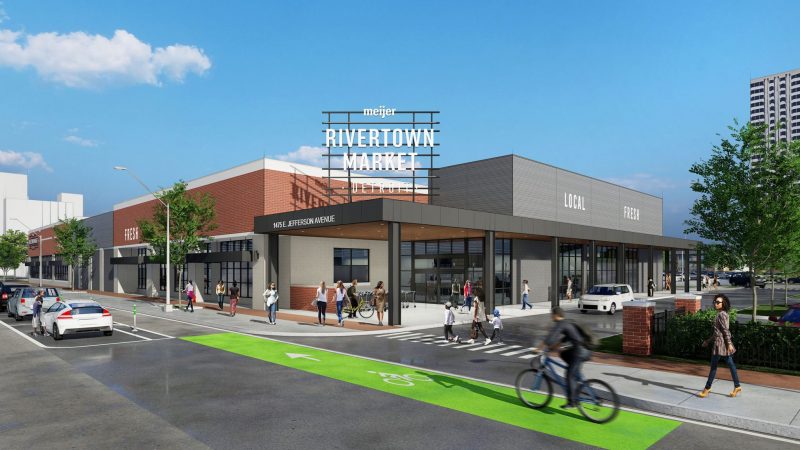
SBN Detroit interviews Erik Petrovskis, Director of Environmental Compliance and Sustainability for Meijer, the Michigan-based retailer with more than 250 stores and 70,000 employees in six states throughout the Midwest. The company ranks 13th on Forbes’ 2021 Largest Private Companies list. Petrovskis leads environmental management across Meijer, including remediation, due diligence, and multimedia compliance programs, and represents the company’s position on regulatory matters. Here he shares some of the efforts, challenges, and goals that are in place, and the opening of the Q: Meijer has a goal of reducing 50% of absolute carbon emissions by 2025 – Can you elaborate and share what actionable items you are working on toward that? A: Meijer set a goal to reduce our absolute carbon emissions by 50 percent by 2025. This reduction represents the emissions over which Meijer has operational control and includes things like our fuel, electricity, natural gas, and refrigerant usage. We have many ongoing projects to reach the reduction goal, including energy efficiency improvements, refrigerant leak detection systems, and fuel efficiency strategies for our fleet. Our virtual power purchase agreements (VPPAs) for two renewable energy fields will also support reaching a 50 percent reduction. Q: Tell us about Meijer’s investment in the Texas-based Lacy Creek Wind Energy Center and how it pertains to Meijer’s carbon emission reduction goals. A: Our investment is structured as a virtual power purchase agreement (VPPA). In this agreement, Meijer commits to purchasing much of the energy generated from the wind farm and receives renewable energy credits (RECs). This project is coupled with the Pisgah Ridge Solar project, which utilizes the same type of agreement. The RECs certify our purchase of renewable energy and therefore represent a reduction in overall carbon emissions from the energy we purchase. Q: When did Meijer initiate sustainability practices? A: Meijer was an early adopter of green initiatives. Fred Meijer, who led the company for more than 40 years, vowed to “Leave the world in a little better shape than when I entered it.” In fact, Fred Meijer spoke at the first Grand Rapids Earth Day celebration in 1970, and company-wide recycling, energy, and waste reduction programs were in place by 1973. Since then, we’ve undertaken many sustainability-related projects, like our plastic bag recycling drop-off, installing EV chargers at select stores, and sourcing responsible seafood. Among others, these efforts became formalized when Meijer established its first sustainability plan in 2014. At Meijer, we understand that to be a good company, we must be a good neighbor. We integrate environmental sustainability into our daily operations, not only because it makes good business sense, but because it aligns with our values and mission of enriching lives in the communities we serve. Our sustainability program has evolved to prioritize four pillars: carbon emissions reduction, food waste reduction, circular economy, and Great Lakes Stewardship. Q: Regarding the Detroit Rivertown location in Lafayette Park, what community partnerships have been put in place since opening? A: Since the store opened in 2021, Meijer has supported more than 20 community organizations, including Junior Achievement of Southeastern Michigan, Bees in the D, The Better Detroit Youth Movement, Pure Heart Foundation, and Greening of Detroit. Q: Are there any other sustainability efforts that are unique to the Rivertown location? A: The Rivertown Market includes electric vehicle charging as an amenity to our customers. This is part of our greater network of EV chargers, which includes more than 70 stores in our footprint. Rivertown Market will also participate in our Gutter Bin pilot program, which is part of our Great Lakes Stewardship efforts. The Gutter Bins will catch garbage and other debris from our parking lots before it enters the waterways. The Council for the Great Lakes Region will coordinate metric tracking and evaluation of the initiative, which is occurring across nine Meijer stores. Q: How does this location and Meijer overall deal with food waste? A: Meijer aims to keep food waste out of landfills. This begins with our ordering process, in which we optimize the quantities ordered to reduce overstock. However, we also have partnered with several organizations to find other solutions. For example, we work with Feeding America, and their network of food banks across our footprint, on our Food Rescue program to provide food nearing its sell-by date to those in need. In 2021, we donated 13.7 million pounds of food through this program. We also rolled out Flashfood program, which acts as a virtual clearance rack for food nearing its sell-by date. This program is not currently available at Rivertown Market but has already diverted more than 1 million pounds of food from potentially entering landfills. Also, any food that can no longer be consumed, including things like food scraps and rotten produce, is picked up from our stores, distribution centers, and manufacturing facilities by third-party vendors, who process the waste into animal feed and compost. Q: What are your biggest challenges when it comes to reaching your sustainability goals? A: We’re lucky to have had strong support both internally and externally regarding our sustainability goals. However, one initial challenge with ours was leading a cohesive path forward. The formation of our Sustainability Council united the company and allowed sustainability to move out across all functions of the business. The Sustainability Council, which is made up of representatives from across the company’s business areas, has served as a powerful mechanism in moving our efforts forward and achieving goals with strong cross-functional collaboration. Q: From your perspective, what is the role of businesses in Detroit in terms of sustainability overall for the city? A: Business plays a key role in sustainability on a global scale. Specifically in Detroit, a focus on business sustainability is essential for the city’s renaissance to be successful and enduring. Meijer is grateful to have the opportunity to support the city’s revival, taking both environmental and social sustainability into account. Q: What businesses and partners and vendors are you working with in Detroit who are doing it well? A: Meijer features
Detroit Sustainability Action Agenda Framework
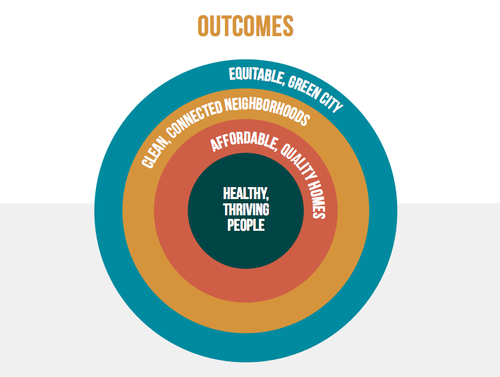
In June 2019, the City of Detroit’s Office of Sustainability published the city’s first Sustainability Action Agenda, a strategic roadmap to create a more sustainable city. In order to develop the agenda, a full year was spent engaging with 6,800 Detroiters to understand their vision for a more equitable, prosperous, and environmentally sustainable city. The city hired 14 sustainability ambassadors, created a Sustainability Advisory Commission, convened an interdepartmental working group of 29 city departments, distributed online and in-person surveys in five languages, and used the coUrbanize digital platform to reach Detroiters online. This engagement helped to define four desired outcomes: Healthy Thriving People Affordable Quality Homes Clean, Connected Neighborhoods An Equitable Green City Across these four outcomes, the city is committed to achieving ten goals and implementing 43 actions collectively called the Detroit Sustainability Action Agenda Framework outlined below. Teams have been working over the past two years toward these goals, and recently the city was listed as #31 of 50 of the greenest cities in the U.S. Amid several challenges and roadblocks, the city teams have worked diligently toward the action items and goals for the past two years. You can view a two-year progress update to read more about the work that’s been done and the success stories. DETROIT SUSTAINABILITY ACTION AGENDA FRAMEWORK FOR HEALTHY THRIVING PEOPLE: Goals & Actions: Increase access to healthy food, green spaces, and recreation opportunities 1. Provide nutrition and environmental education at recreation centers and parks 2. Create local food purchasing guidelines for city-funded programs 3. Improve access to high quality, healthy food at grocery stores 4. Renovate existing and create new parks throughout the city 5. Expand sports recreation opportunities for youth Improve air quality and reduce exposure to pollution 6. Expand local air quality monitoring system 7. Create citywide truck routing network 8. Increase tree plantings in vulnerable areas 9. Reduce emissions from city vehicles Advance equity in access to economic opportunity 10. Expand green jobs training and workforce development programs 11. Prepare Detroit residents for city employment opportunities 12. Launch a digital inclusion program 13. Expand wireless internet access on city buses 14. Launch a diversity, equity, and inclusion initiative AFFORDABLE QUALITY HOMES Goals & Actions: Reduce the total costs of housing, including utilities 15. Improve access to utility efficiency programs 16. Expand home plumbing repair programs 17. Implement and expand upon the Blue Ribbon Panel’s water affordability recommendations 18. Establish affordable housing preservation goals for building owners receiving city incentives 19. Increase access to information on existing affordable housing Improve the health and safety of existing and new housing 20. Expand lead poisoning prevention initiatives across the city 21. Create a residential lead abatement training pilot program 22. Develop green building guidelines for new developments receiving city incentives CLEAN CONNECTED NEIGHBORHOODS Transform vacant lots and structures into safe, productive, sustainable spaces 23. Improve processes to purchase city-owned vacant lots 24. Support neighborhood-based efforts to care for vacant lots and structures 25. Develop a fee structure and associated rules for irrigation-only water accounts Reduce waste sent to landfills 26. Launch a citywide recycling campaign 27. Expand curbside recycling to multifamily buildings 28. Expand recycling to public spaces and all city facilities 29. Develop a best practices framework for commercial-scale compost operations 30. Launch residential composting pilot program Make it easier and safer to get around Detroit without a personal vehicle 31. Improve mobility connections between neighborhoods and job centers 32. Implement safety measures to reduce crash severity 33. Expand Detroit’s protected bike lane network EQUITABLE GREEN CITY Enhance infrastructure and operations to improve resilience to climate impacts 34. Create neighborhood scale, distributed green infrastructure projects 35. Incorporate green stormwater infrastructure into street redesign and greenway projects 36. Integrate climate change impacts into hazard mitigation planning 37. Improve resident access to sustainability-related city services 38. Expand emergency preparedness and communication tools Reduce municipal and citywide greenhouse gas emissions 39. Develop a greenhouse gas assessment and climate action strategy 40. Increase the adoption of solar photovoltaic technologies 41. Enhance energy and water efficiency at city-owned facilities 42. Launch Mayors’ Challenge Program for commercial buildings 43. Develop an electric vehicle infrastructure strategy Be sure to subscribe to our newsletter for regular updates on sustainable business practices in and around Detroit.
ROSSETTI Architecture Shares On its Sustainability Practices
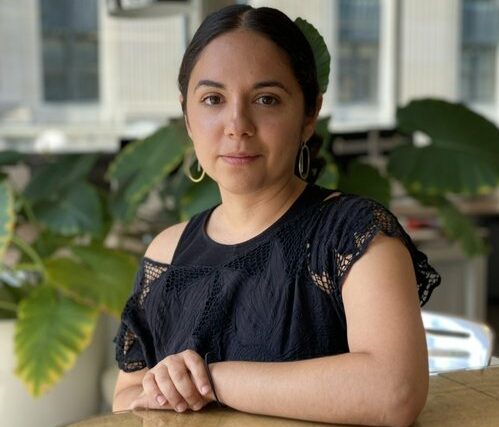
SBN Detroit spoke with Paulina Reyes, a registered architect, and designer at ROSSETTI who leads the ROSSETTI Sustainability Lab. In addition to her current role at ROSSETTI, Reyes possesses a dedicated background in design-based research, community outreach, and the development of pedagogical efforts connecting cultural programming with the tools of architecture and urbanism. She acted as Project Designer-Manager for Estudio Teddy Cruz + Fonna Forman, leading architectural and urban projects across the US-Mexico border, including fieldwork, and cross-border internship programming. Sustainability has remained a focus of her work as a previous Design Fellow with the University of Michigan and Fulbright recipient in which she developed research on water sustainability in the context of self-governance and low-income public housing in Mexico City. The ROSSETTI Sustainability Action Plan calls for embracing and integrating sustainability practices in every facet of their work, believing that prioritizing sustainability is not just a mantra; it offers a vision forward in a rapidly changing world as a means to educate, innovate, and push their work farther than ever before. Q: Please share the sustainability practices and work ROSSETTI has in place. A: Sustainability has been a feature of our work for some time. We have several past LEED projects that demonstrate the impact of sustainable design. Louis Armstrong Stadium, for example, is the world’s first naturally ventilated stadium, certified as LEED Silver, and it also won the AIA Detroit Building Award with recognition for sustainability. The UCLA Health Training Center, the training facility for the Los Angeles Lakers, achieved LEED Platinum through innovative use of solar mitigation strategies, including vertical shading that doubles as signage and a PV solar array that reduces energy consumption by 30%. The particular inflection of sustainability through sports work is an interesting one, as sports projects by nature are large civic projects that reach huge numbers of people, and hinge specifically on supporting the performance of elite athletes, their health, and well-being. At ROSSETTI, we are interested in furthering this connection with sports and sustainability in addition to our work at large. Q: What are your short-term and long-term goals when it comes to sustainability? A: One short-term goal is to simply shift awareness and culture around environmental impact. Even just being conversant in the basic tenets of sustainability can help designers and clients alike think differently about our approach and how we define value for a project. Like many others, we have long-term goals to address and reduce emissions in a big way. Most of our clients these days have ambitious goals and mission statements around reducing or even eliminating emissions within the next few decades. Given that this is easily within the lifespan of our projects, this requires that we address emissions (both operational and embodied) as drivers in our design process from the beginning. GHG (greenhouse gas) emissions are the primary source of global climate change and present an easily quantifiable metric for benchmarking and evaluating success. I would like to see ROSSETTI’s projects take on the challenge of benchmarking, measuring, and reducing emissions in all of our projects moving forward. Q: What is the Sustainability Lab? A: Initially launched in March 2021, the ROSSETTI Sustainability Lab is represented by an interdisciplinary array of staff members from across our office, from design to marketing to project management. We meet on a biweekly basis to discuss ongoing initiatives, and outreach to others in the field. A core group of our members works on advancing various sustainability efforts in the office. We also have a lively Zoom group chat! Q: How do your sustainability practices come into play when choosing vendors? A: We prefer to work with vendors that prioritize sustainability in their products. We work with reps like Susan Hall (Eco Surroundings) who only represent sustainable materials like Plyboo, Durat, Baux, DuraPalm, and more. Luckily, a lot of industries, particularly for interior finishes like carpet or porcelain tile are already headed in that direction. We are consistently meeting with vendors to see what’s new and identify projects that can support our client’s sustainability goals, including LEED certification. Q: What about material choices? A: As a principle, we look to specify materials that are responsible, durable, and locally sourced. Some examples include Interface Carpet, Unika Vaev (acoustic materials), and Fireclay, which is made in the USA with zero waste and mindful manufacturing. We also work with Haworth, who does a lot of recycling/reuse of material and recently earned zero waste to landfill status and just launched a more rapidly biodegradable textile. We try to avoid materials that off-gas or contain harmful chemicals like VOCs (volatile organic compounds), including epoxy or vinyl. Specifying more sustainable materials can also support other goals for clients, for example, more durable finishes or furniture that don’t need replacement as often, or local materials which reduce lead time. Q: Beyond vendors and material choices – what else do you look at? A: When it comes to materials, whether interior finishes or building structure, embodied carbon is also an extremely important metric and one which we are looking more into. There currently exist many avenues for measuring embodied carbon, software like EC3 or Tally, or environmental product declarations (EPDs) for specific products or industries. Beyond that, water use, energy use, and waste production are also key metrics for evaluating the sustainability of our projects. Q: ROSSETTI believes that sustainability is key to client success – please elaborate. A: Sustainability, beyond being a social imperative, is quite simply put, good for business. Sustainable buildings offer a host of financial benefits to clients: operational savings, higher sale or rental value, lower asset risk, and insurance premiums. To give an example, the PV solar array installed on the LEED Platinum Los Angeles Lakers practice facility not only offsets 12.6 million pounds of carbon dioxide annually but saves the Lakers $38,000 a year in operational costs. There is also obviously a broader value proposition to sustainability that includes human health and well-being, community value, and experiential opportunities to
Tracy Reese Returns to Detroit to Train Local Craftsmen and Produce For a Global Sustainable Footprint
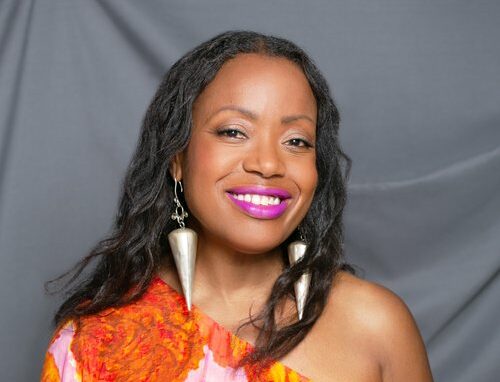
SBN Detroit spoke with Tracy Reese, an American fashion designer who has been featured in fashion publications that include Vogue, Elle, Glamour, InStyle, and O, The Oprah Magazine; and whose creations have been worn by Michelle Obama, Sarah Jessica Parker, and Taylor Swift. In 2018, after 30 years in the industry, Reese moved back to her hometown of Detroit and in 2019 launched Hope for Flowers by Tracy Reese. The collection is designed and produced following three guiding principles of sustainability: the health of people, the planet, and equity in profit. Reese serves on the board of directors of the Council of Fashion Designers of America (CFDA), where she has been a member since 1990. Reese also serves on the board of trustees of Nest Artisan Guild and the advisory council of the College for Creative Studies Fashion Accessories Design Program. She is also part of Turnaround Arts, a Kennedy Center program that transforms schools through the strategic use of arts. She recently served as board president of ISAIC, the Industrial Sewing and Innovation Center. She is working to build an artisan studio in Detroit creating economic opportunities for women in underserved communities. Q: Please share how Hope for Flowers and the sustainability aspect came about.A: In 2017, I had three labels and had been working in the industry for more than 30 years with my own brand, functioning as a typical manufacturing wholesaler. All of my production was overseas, and I sourced fabrics from all over the world. I started learning more about sustainability, and around that time, the CFDA + Lexus Fashion* Initiative that focuses on sustainability launched. I missed the deadline to apply in 2017 and was determined to apply the following year, so I did, and I was selected. It was an eye-opener. It was nine months of learning about everything from textiles to carbon footprint to human rights issues within the supply chain to waste in pattern making and more. At the end of the program, we were required to present a blueprint to be judged, and then to follow through with the blueprint. During this time, I started feeling a pull back toward Detroit and bought a house. I was trying to determine how I could be back in the city more. As I created this blueprint, I realized that Detroit was the perfect place to launch a brand. I started changing my perspective on how I was working. Running parallel to this was an impending departure of ways with my partners. There were things we didn’t see eye to eye on that were nonnegotiables for me. They wanted to go for volume, and I wanted to do something smaller and more meaningful and work on giving back to the community. So, I took the blueprint and headed to Detroit. Part of my blueprint included localized production, so training Detroiters to be part of this industry in a meaningful way was a natural next step. I set up a business model with a social and sustainability-focused mission. I worked with Shayla Johnson from Scarlet Crane Creations and interns from Cass Tech, my alma mater. We manufactured in Flint. This set the groundwork for Hope for Flowers. Q: Do you have a set of short-term and longer-term goals you are working toward as you grow Hope for Flowers? A: My short-term goal was and is to address the low-hanging fruit – textiles. Every product we work with falls into the mild zone. We are using bast fibers like linen – a crop that doesn’t require lots of water and doesn’t deplete the earth of nutrients. We also use organic cotton and responsibly forested wood byproduct fibers like Tencel and are experimenting with recycled wool and other fabrics. The idea is to create garments that stand the test of time yet biodegrade over the long haul. We look at biodegradable materials for buttons like natural shells or wood and try to use natural things found on the planet versus man-made We also try to design clothes that are flexible, meaning two different sizes can wear the same garment. This reduces overproduction My long-term goal is to produce in Detroit. To that end, we are training and working with local craftspeople and sewers to develop them to a stage of mastery that’s competitive with what we can import. We are launching an apprenticeship program, and our goal is to start running small-batch production in-house. Q: What impact do you think Hope for Flowers and the vendors and partners you work with are having? A: Each one of us is proving it’s possible, and I think that makes an impression on anyone considering taking steps toward sustainability. When those in doubt see a successful business model that’s working and financially viable, that’s impactful. The more people who choose to work this way, the easier and less expensive it becomes, and we can speak collectively. We need everybody to get on board, so it’s about setting aside the competitive mindset and working as a unified industry. Q: What drives your passion when it comes to the brand and its deep commitment to sustainability? A: I don’t see that it’s a choice really – it’s a necessity. We need to work in a way that’s less harmful to the planet and people. It’s also about holding ourselves to a higher standard, accepting the challenge and being energized by it. The idea of trying to solve this is exciting and I want to be up for the challenge, continue to learn, and continue to grow. Q: From your perspective – what is the role of businesses in Detroit in terms of sustainability? A: Each business has its own role to play. Getting started doesn’t have to be complicated. There are simple internal things that – when built into the company philosophy – begin to embed new habits and practices in the employees. We started composting a few months ago, and we are all working on developing new habits. Understanding
